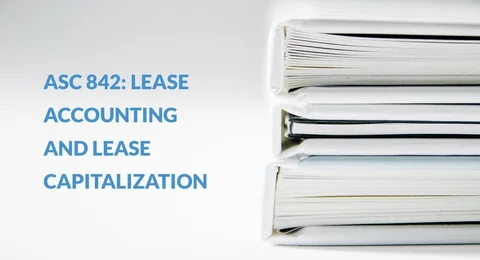
There’s a new rule in town that venture-funded startups need to know about - and consider following if they want to remain GAAP compliant. ASC 842 is regarding “leases” - you know, the money you pay every month to give your employees a place to work. You can read some of the specifics in this handy 46 page PDF published by FASB, or you can read the rest of our blog post… But our real recommendation is to work with a good accountant who can help you determine if being compliant with ASC 842 makes sense for your startup.
Why did FASB create ASC 842?
Back in the early 2000’s, companies like Enron figured out how to cook their books in several creative ways, including doing some not to “transparent” things with long term leases. This new rule tries to present all contracts/liabilities on the Balance Sheet instead of them being “hidden” off balance sheet. Traditionally, leases were just expensed as the monthly rent payment happened. The rational is that leases don’t go away; companies are signing contracts that require them to make all of the payments. As an investor, wouldn’t you want to know if you were investing in a company that had signed up for a 20-year lease that requires a $1 million early termination fee?
What is ASC 842?
ASC 842 is a “newish” rule requiring GAAP compliant companies to record most of their operating leases on their balance sheet. For most startups, this means that instead of simply recognizing an office lease every month, they will capitalize the entire amount on their balance sheet at the beginning of the agreement and recognize a portion every month.
For example, if you sign a lease contract for 3 years, agreeing to pay $20,000 a month in rent, a Lease Liability of $720,000 ($20,000 * 12 months * 3 years) should be recorded in the Liabilities section of your Balance Sheet.
Who must comply with ASC 842?
All public companies must adhere to ASC 842. While GAAP and ASC are not required for private companies like venture funded startups, you may want to follow or be close to GAAP compliant.
Does my startup need to follow ASC 842?
A funded company is not required by law to follow ASC 842. That being said, most experienced VCs want to see GAAP financials. It makes being acquired faster and easier, makes audits go better and just shows that the management team is committed to best in class operations. We recommend that our founders who are trying to create industry-defining companies strive to have best-in-class operations, including being as close to GAAP compliance as possible.
When does ASC 842 take effect?
ASC 842 (Lease Accounting) was agreed upon on February 25th, 2016 by FASB (Financial Accounting Standard Board). Companies would need to start adhering to ASC 842 starting December 15, 2018, and all other businesses on December 15, 2019. Given these parameters, we recommend that startups should start adhering to ASC 842 as of 1/1/2019 by recording a Lease Liability equal to the remaining lease balance as of that date. In general, there is no need to go back to 2018 or amend prior-year tax returns.
How much does ASC 842 cost to implement?
The cost of implementing this rule varies based on the volume and complexity of your leases and lease agreements. Things like a standard $250,000 per month, straight-line rental contract are easy to implement. If the contract calls for inflation, free months, or stepped pricing, it gets tricky. Expect to pay $2K+ per contract.
Caveat: this article is intended as general guidance for funded startup founders, and does not replace the need to work with a professional. It’s also a high-level overview and is in no way complete. Your company is unique; talk to your CPA or bookkeeper.








